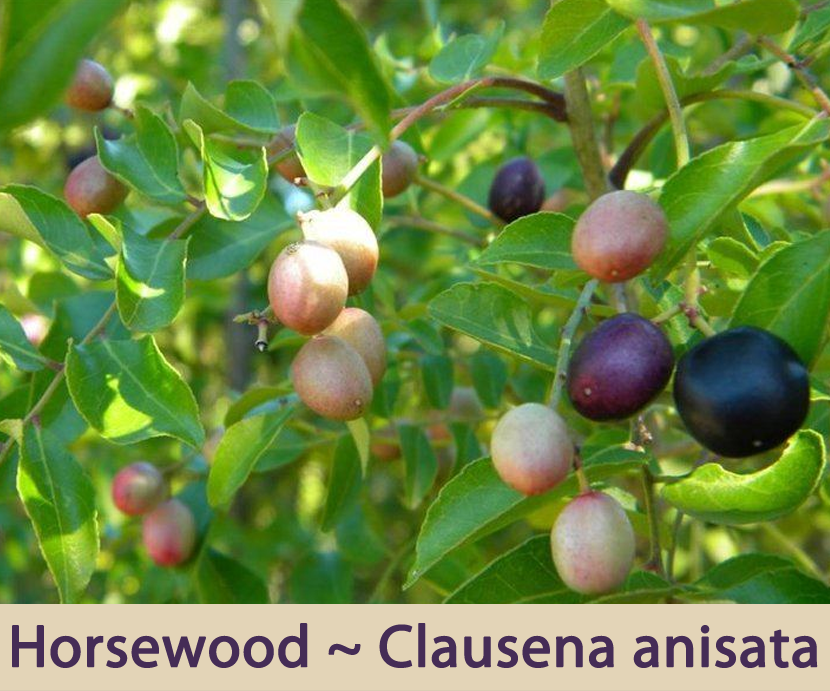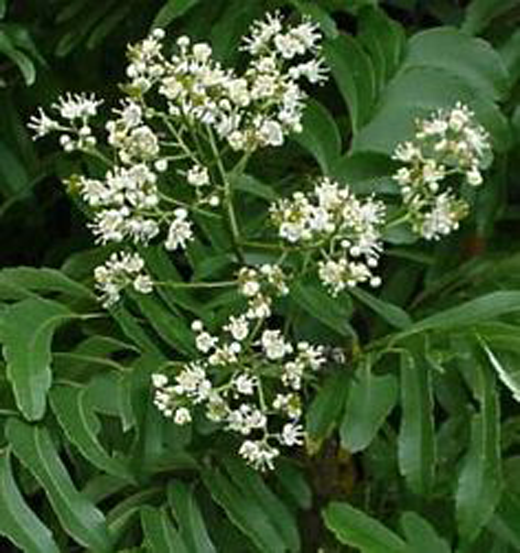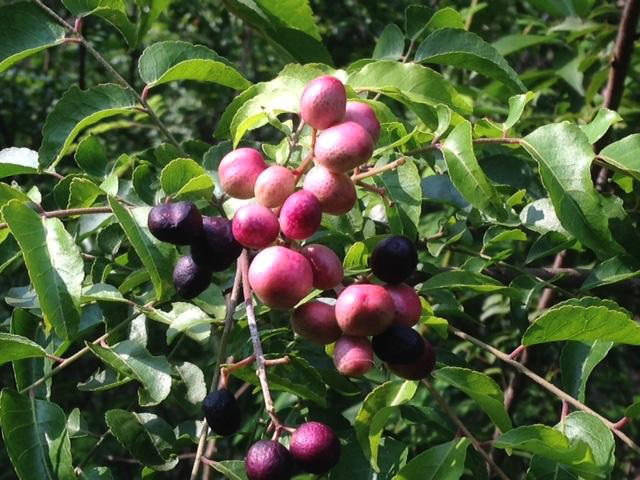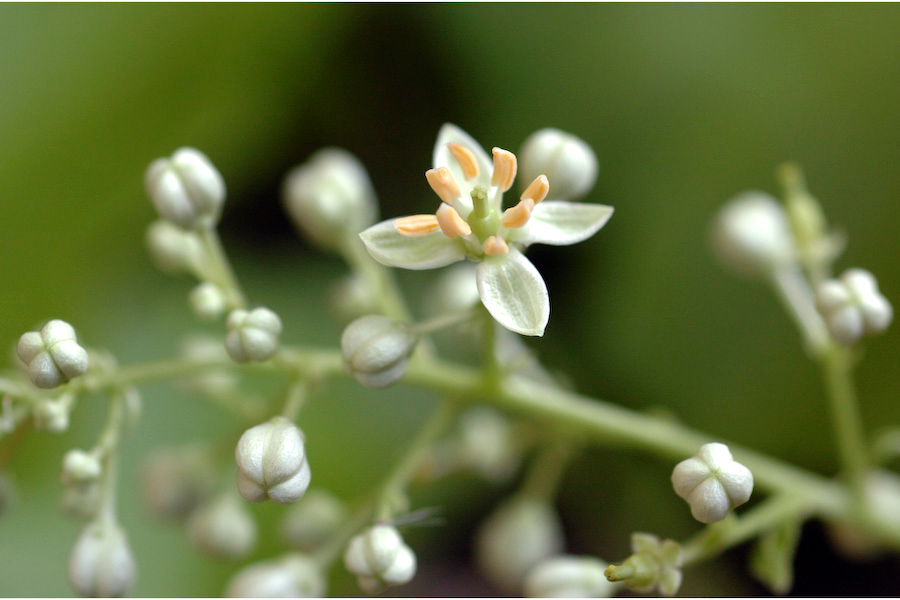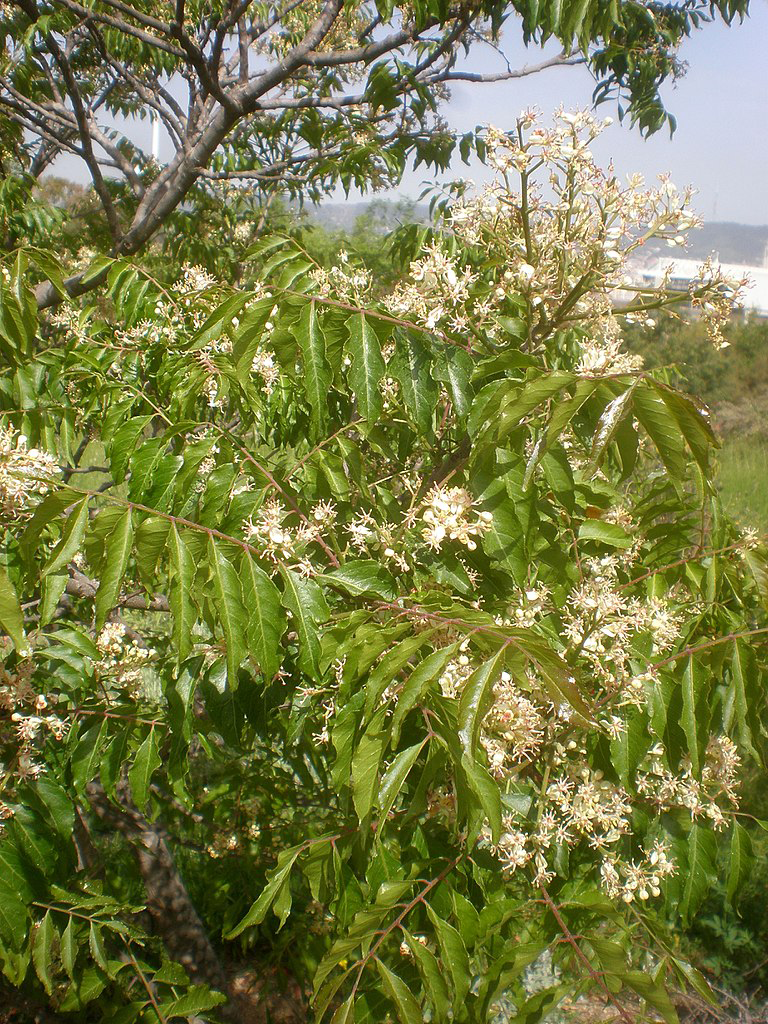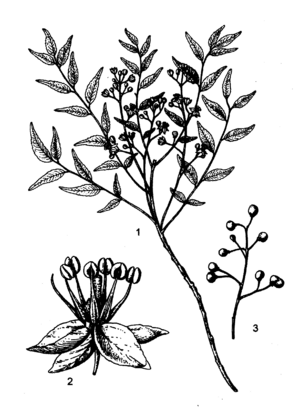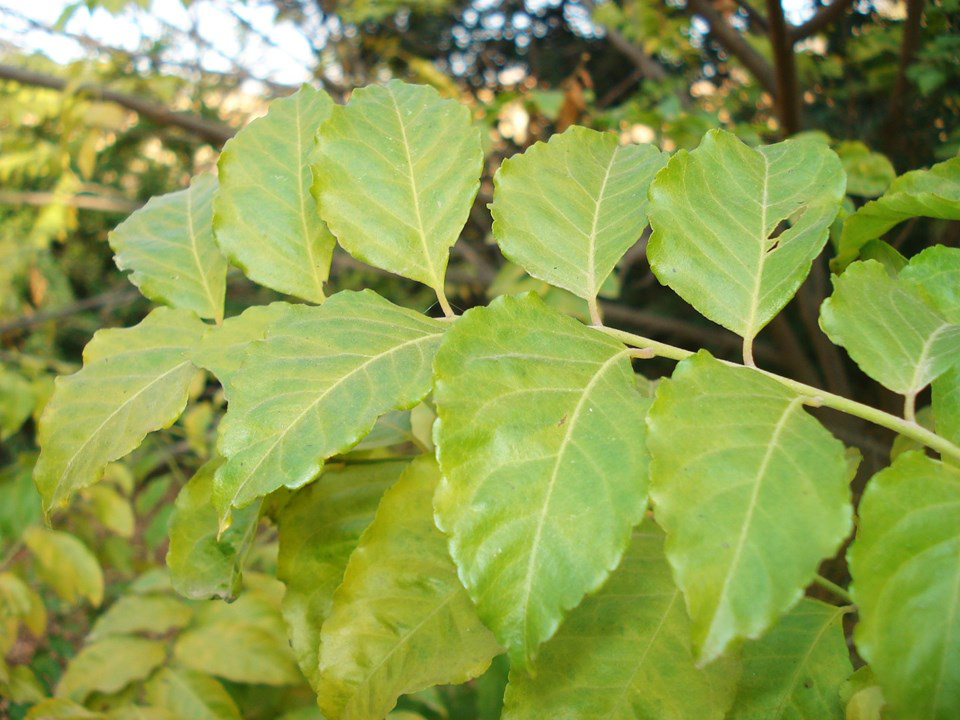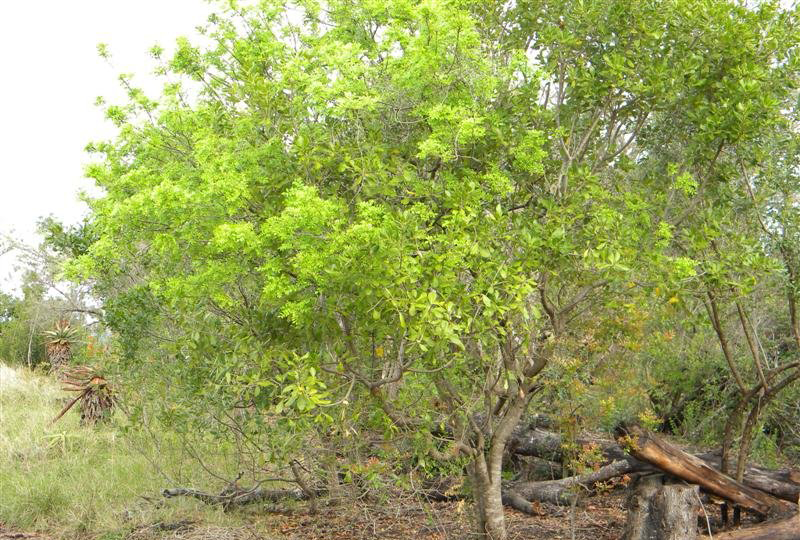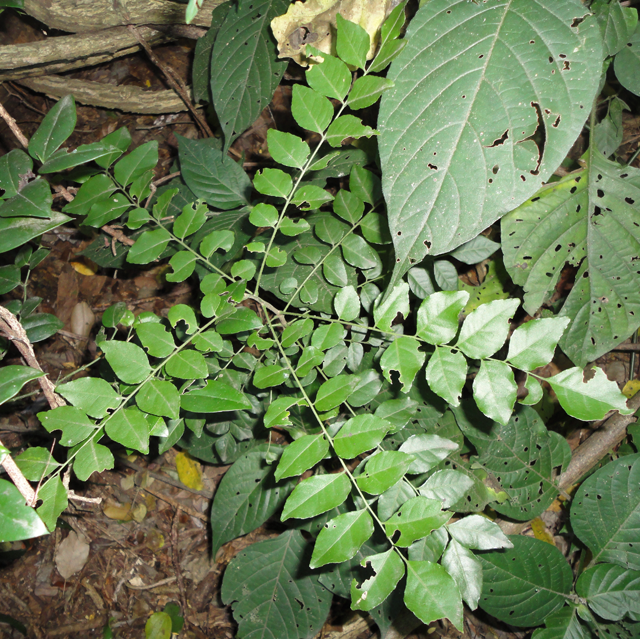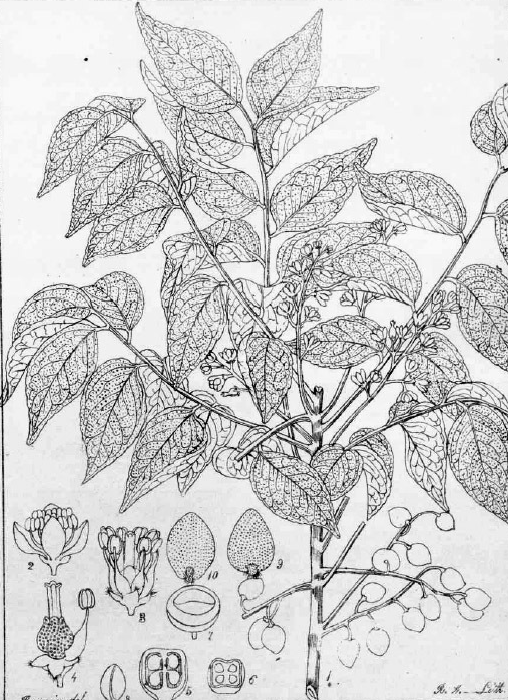| Horsewood Quick Facts | |
|---|---|
| Name: | Horsewood |
| Scientific Name: | Clausena anisata |
| Origin | Afro-tropical realm or Sub-Saharan Africa, but absent from the drier regions |
| Colors | Start off green turning red or purplish-black when mature |
| Shapes | An ovoid, fleshy berry about 3.3 to 7 mm in diameter |
| Health benefits | Support for gastro-intestinal disorders, fever, pneumonia, headache, hypotension, sore throat, sinusitis, whooping cough, malaria, syphilis, kidney ailments, irregular menses, threatening abortion, skin diseases and epilepsy |
| Name | Horsewood |
|---|---|
| Scientific Name | Clausena anisata |
| Native | Widespread in the Afro-tropical realm or Sub-Saharan Africa, but absent from the drier regions. It is also found in tropical and South-East Asia, growing in India and Sri Lanka and extending as far as Queensland in north-eastern Australia and some Pacific islands. It is cultivated in Malaysia and Indonesia |
| Common Names | Horsewood, Maggot killer |
| Name in Other Languages | Amharic: Limich’I (ልምጭ) English: Horsewood, Maggot killer Japanese: Guransena a nisata (クラウセナ ・ ア ニサタ) Kurausena anisata, Kurauzena Anisata (クラウゼナ ・ ア ニサタ ) Malay: Tikusan, Tikusan daun Malayalam: Kariveppila, Kattukariveppila, Potti, Suganthaveppu (സുഗന്ധവേപ്പ്) Mizo: Arpa-til Portuguese: Clausena Shona: Muvengahonye, Muvhunambezo Sudanese: Kibajeteh Swedish: Mjavikali Tamil: Kattukarveppilai, Kattu veppilai, Pothi |
| Plant Growth Habit | Small, fast-growing, deciduous, evergreen shrub or small tree |
| Growing Climates | Moist deciduous and evergreen forests, savanna, thickets, riverine forest, disturbed areas and secondary forest |
| Plant Size | 3–5 m tall, but it can grow up to 10 m high |
| Bark | Smooth, thin, grey-green bark becoming brownish and mottled with age |
| Branchlet | Young branchlets terete, grey pubescent |
| Timber | Yellowish-white, elastic and dense |
| Leaf | Compound leaves are up to 30 cm long and stipules are absent. Leaflets are 11–37 in number, alternate to sub-opposite, and ovate to narrowly elliptical in shape, with a markedly asymmetric, rounded or cuneate base. The leaflet apex is obtuse or notched, and the margins are entire or crenulate |
| Flowering season | July to November |
| Flower | Flowers are scented, bisexual, regular, with 4 sepals about 1 mm long, 4 petals that are 3 to 7 mm long, elliptical, concave and cream to yellowish-white |
| Fruit Shape & Size | Ovoid, fleshy berry, 3.3–7 mm in diameter, single-seeded |
| Fruit Color | Start off green turning red or purplish-black when mature |
| Propagation | Either stem cuttings or by sowing seeds |
| Plant Parts Used | Whole plant, stem, stem bark, twigs, roots, root bark, leaves and flowers singly or in combination |
| Season | August to January |
| Culinary Uses |
|
Plant Description
Horsewood is a small, fast-growing, deciduous, evergreen shrub or small tree with strongly-scented leaves and sweet-smelling flowers that normally grows about 3–5 m tall, but it can grow up to 10 m high and appears quite spindly when young. As it matures, the Horsewood has a lovely rounded shape with compound, glossy foliage that droops slightly. The plant is found growing in moist deciduous and evergreen forests, savanna, thickets, riverine forest, disturbed areas and secondary forest. Barks are smooth, thin, grey-green becoming brownish and mottled with age. Young branchlets are round, grey velvet-hairy. Timber is yellowish-white, elastic and dense
Leaves
The 30 cm long leaves are spiral, compound, usually imparipinnate, and sometimes paripinnate, clustered at twig ends with about 11 to 37 leaflets, arranged alternately to sub-oppositely. Leaflet-stalk is about 0.2 cm long. Leaflets are 2.5-8 cm long and 1.3-3.5 cm wide, generally increase in size towards tip. The leaflets are ovate to narrowly elliptical, with a marked asymmetric, rounded base, an obtuse or notched apex and entire or toothed margins, with no stipules present at the base. The leaf surfaces are densely covered with embedded, pellucid glands that produce a strong aroma when bruised.
Flower
The inflorescence is a panicle, borne in winter and spring, from July to November in South Africa. The flowers are scented, bisexual, regular, with 4 sepals about 1 mm long, 4 petals that are 3 to 7 mm long, elliptical, concave and cream to yellowish-white. The 8 stamens have filaments 2 to 6 mm long, which are thickened at their base.
Fruit
Fertile flowers are followed by an ovoid, fleshy berry about 3.3 to 7 mm in diameter. Fruits are initially green turning to red or purplish-black when mature, containing 1 to 3 seeds, borne in spring and early summer (August to January).
Traditional uses and benefits of Horsewood
- Horsewood is used in treating a wide range of ailments and conditions.
- Decoctions of the leaves or roots are taken for gastro-intestinal disorders, fever, pneumonia, headache, hypotension, sore throat and sinusitis, venereal diseases, as an aphrodisiac and anthelmintic, as a tonic for pregnant women, and as a tonic for infants to prevent rickets and to control convulsions.
- Root decoctions and infusions are also taken for whooping cough, malaria, syphilis and kidney ailments, irregular menses, threatening abortion, skin diseases and epilepsy, and given to women before and after parturition to ease delivery and to expel blood from the uterus, and later to boost milk production.
- Roots are chewed to combat indigestion.
- Crushed leaves are used as an antiseptic and analgesic, and are applied to open wounds, mouth infections, otitis and abscesses, also burns, hemorrhoids, rheumatism and general body pains.
- Crushed leaves are also used to treat wounds in domestic animals, and as a snake-bite antidote.
- In West Africa a leaf decoction is taken to treat venereal diseases and as an aphrodisiac, and also to strengthen infants and prevent rachitis.
- Root decoction is taken as a tonic by pregnant women, to facilitate child birth and cleanse the uterus.
- Root decoction is also given to children to control convulsions.
- In East Africa, the roots are chewed to treat indigestion and a root decoction drunk to treat whooping cough, malaria, syphilis and kidney troubles.
- Root decoction is given to women after childbirth to promote milk production in Kenya.
- It is also drunk to treat irregular menses, threatening abortion, skin diseases and epilepsy.
- Leaf decoction is drunk to treat hypotension and a sore throat in Seychelles.
- Leaves are poulticed on boils and spots.
- Mixture made from the crushed leaves, salt, Capsicum peppers and tamarind seeds, is taken to treat lack of appetite, bloating and indigestion.
- Leaf extract is taken to treat diabetes in South Africa.
- Leaves and roots are taken for treating colds, rheumatism and arthritis.
- Externally, they are crushed and applied to wounds, sprains, contusions, sores, burns and fractures.
- They are also used for treating toothache and other mouth infections.
- Root decoction is taken to control convulsions in children and as a tonic by pregnant women.
- Traditionally in South Africa, new-born babies are passed through the wood smoke to fumigate them.
- Leaf infusion is used as a steam bath as a deodorant, to cleanse the body internally, to cure rheumatism and to strengthen the heart.
- In Tanzania, traditional healers use it against oral candidiasis and fungal infections of the skin.
- In the Temeke district (Daressalam, Tanzania) traditional healers use it against epilepsy and as an anticonvulsant.
- In South Africa, the leaves are applied against high blood pressure.
Other Facts
- Dried leaves are widely used as an arthropod repellent, such as a filling material for mattresses and pillows against fleas, lice and bedbugs.
- The fruits are sweet and readily eaten by people and other animals.
- In Kenya the leaves are used as mattress filler, because they are aromatic and repel insects.
- Twigs are widely used for toothbrushes and the stems for walking sticks and small implements.
- Burnt stems are used to smoke fish and for ripening bananas.
- The stem bark is used as rope for the construction of granaries.
- In southern Africa a leaf infusion is used as steam bath as a deodorant.
- Twigs and leaves are widely used in magico-religious ceremonies and rites, as the twigs are said to evict bad spirits.
- The average 1000 seed weight is 78.8 g.
- The powdered root is known to be lethal to snails.
- Bundles of the plant are widely used as an insect repellent.
- The oils from the leaves are also used in flavoring, perfumes, confectionery and pharmaceuticals.
- In some parts of Africa and in the Philippines the burning of fresh leaves is utilized to repel mosquitoes.
References:
https://www.itis.gov/servlet/SingleRpt/SingleRpt?search_topic=TSN&search_value=825228#null
https://indiabiodiversity.org/species/show/9479
https://www.flowersofindia.net/catalog/slides/Horsewood.html
https://en.wikipedia.org/wiki/Clausena_anisata
https://www.prota4u.org/database/protav8.asp?g=psk&p=Clausena+anisata
http://tropical.theferns.info/viewtropical.php?id=Clausena+anisata
https://www.cabi.org/isc/datasheet/13778
http://pza.sanbi.org/clausena-anisata
https://uses.plantnet-project.org/en/Clausena_anisata_(PROTA)


